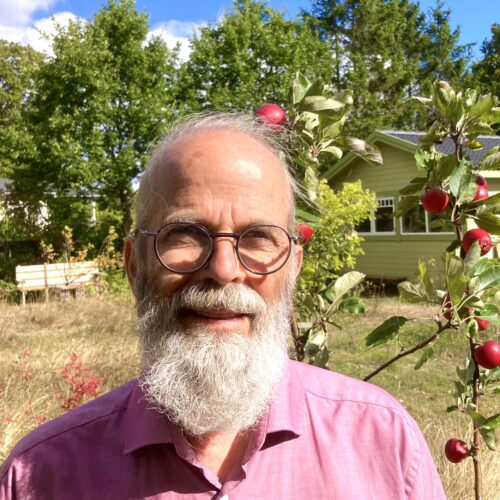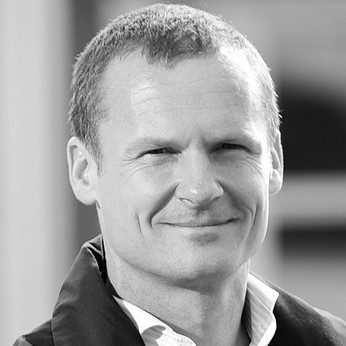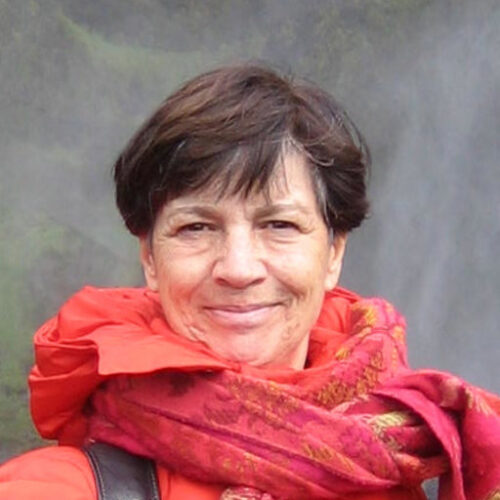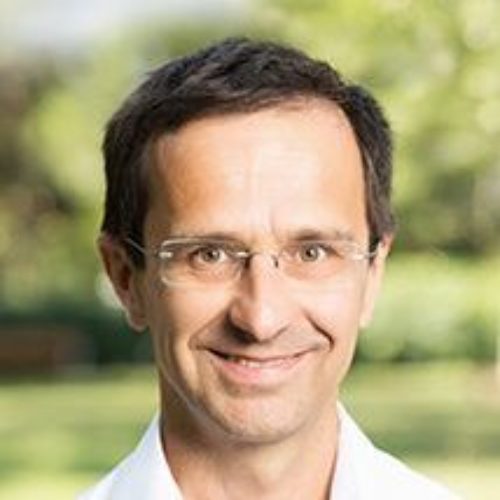Debate on The Contested Provisioning of Care and Housing
Socialisation of housing in Sweden and Denmark: a Polanyian lesson
15th of September, 2022

Eric Clark
Commodification, financialisation and marketisation of housing have been core objectives and main outcomes of the neoliberalisation of housing politics. These processes have restructured the institutional conditions surrounding the provision of housing in recent decades, across Europe, and not least in the Nordic countries. Polanyi’s substantivist approach to political economy, with its pivotal conceptualisations of modes of economic integration (householding, reciprocity, redistribution and exchange) and double movements (marketisation and social protection), offers a robust framework for analysing such related yet variegated processes. [1] The histories of non-profit housing in Sweden (allmännyttan) and Denmark (almen) (allmän and almen translate to ‘common’) lend themselves particularly well to drawing a specific lesson from a Polanyian perspective, due to a key distinction: in the Swedish case, allmännyttan has historically been instituted by the local state (municipally owned and managed housing companies), while in Denmark, almen has rather been constituted as a form of association-based tenant-owned housing. Both of these decommodified housing sectors are products of socially protective countermovements to “the devastation of neighbourhoods”, “the general degradation of housing”, and “all-round dislocation” associated with late 19th and early 20th century marketised housing. [2] And both have been targeted by neoliberal politics in concert with powerful financial interests in order to privatise and recommodify them, thereby expanding the scope of debt and mortgage markets. The question arises: how have these distinctly different institutions fared in terms of resistance to the neoliberal offensive to marketise their housing?
Strongly regulated and subsidised by the state, Swedish municipal rental housing (allmännyttan) grew to become, by 1980, the second largest tenure form in the country, surpassing private rental. This form of socialisation of housing has however proven vulnerable to neoliberal attacks, once the longstanding Social Democratic hegemony was broken in 1991. Carl Bildt’s right-wing government promptly initiated a radical dismantling of national housing policies. Subsequent Social Democratic governments (1994-2006) did little to reverse direction, and Fredrik Reinfeldt’s right-wing government (2006-2014) could rapidly achieve a massive withdrawal of national housing policies. [3] Housing was relegated to a minor task under the Ministry of Municipalities and Financial Markets (yes, in the same ministry), its minister proclaiming that “We don’t have any lorry department for lorry issues, or any lorry minister. Why should we have one for housing?” [4] Housing responsibilities and politics devolved to local governments. The only central government goal was a well-functioning market. Market fundamentalism prevailed: decommodified housing was recommodified. Allmännyttan declined from 25% in 1990 to 17% in 2010, as sell-outs (commonly much below market values) outstripped diminishing new construction. Allmännyttan is currently the smallest segment of housing in Sweden, and appears to soon reach a level below its 1960 position at 14%.
In Denmark, the Social Democratic party never achieved the level of hegemony as in Sweden. The formation of the Danish welfare state was much more the product of compromise with liberal-conservative forces. Housing owned and operated by the local state was not politically feasible in Denmark. The compromise reached was a form of non-profit housing (almen) collectively owned by private associations of tenants under a national umbrella organisation: Danmarks Almene Boliger. [5] While Swedish allmännyttan peaked around 1990, the Danish almen grew steadily from 10% in 1960 to 21% in 2020. As in Bildt’s and Reinfeldt’s Sweden, almen also came under neoliberal attack in Anders Fogh Rasmussen’s (2001-2009) and Lars Løkke Rasmussen’s (2009-2011, 2015-2019) Denmark. But, being a form of collective private property, almen has not been so easy to dismantle as Sweden’s municipal-owned allmännyttan. It is, after all, private property. The Danish government’s “stealthy and frontal attacks” are too complex to summarise here. Suffice it to say that so far, almen has withstood these attacks, and the main reason for this resistance appears to lie in its collective ownership and strong organisation “outside the (local) state”. [6]
Regarding the specific composition of Swedish allmännyttan and Danish almen in terms of Polanyi’s modes (forms, patterns, principles) of economic integration, it would run counter to Polanyi’s view to simply categorise allmännyttan as state redistribution and almen as community reciprocity. The extent to which Polanyi thought of forms of economic integration as ideal types remains a matter of discussion. [7] It is nevertheless not helpful today to interpret, much less deploy, Polanyi’s theoretical framework as merely a set of ideal types, with all the methodological weaknesses this entails. [8] Polanyi repeatedly insisted that modes of integration do not provide a “classification of economic systems”, even if one mode “may predominate”; rather, their “coexistence … is common.” [9] For instance, “Reciprocity as a form of integration gains greatly in power through its capacity of employing both redistribution and exchange as subordinate methods.” [10] Owner-occupied housing, while economically integrated largely through market exchange, has long been heavily buttressed by state redistribution through production subsidies and tax deductions in both Sweden and Denmark. Likewise, allmännyttan is not economically integrated solely through state redistribution, nor almen solely through community reciprocity. The Danish almen is characterised also by non-state redistribution as well as state redistribution; just as the Swedish allmännyttan is also characterised by what may be called local state reciprocity. The name kommun suggests as much.
So, what Polanyian lesson might we gain from studying the history of Swedish allmännyttan and Danish almen? I think Polanyi’s 1919 argument nails it: “Socialisation should not be synonymous with state economy.” [11] Socially protective countermovements to the destructive forces of marketisation should not be limited to state redistribution through (local) state institutions and programs (which may be more or less emancipatory, more or less patronising). [12] As the experience of allmännyttan shows, these can be dismantled and taken away much more easily than they are built up.
Reference
[1] Novy, A, Bärnthaler, R and Stadelmann, B, 2019, Navigating between improvement and habitation: countermovements in housing and urban infrastructure in Vienna. In Atzmüller, R, Aulenbacher, B, Brand, U et al., (eds.) Capitalism in Transformation: Movements and Countermovements in the 21st Century. Edward Elgar, 228-244. Bärnthaler, R, Novy, R, and Stadelmann, B, 2020, A Polanyi-inspired perspective on social-ecological transformations of cities, Journal of Urban Affairs.
[2] Polanyi, K, 2001, The Great Transformation: The Political and Economic Origins of Our Time. Beacon Press, pp. 139, 190.
[3] Hedin, K, Clark, E, Lundholm, E and Malmberg, G, 2012, Neoliberalization of housing in Sweden: gentrification, filtering, and social polarization, Annals of the Association of American Geographers, 102(2), 442-463. Christophers, B, 2013, A monstrous hybrid: the political economy of housing in early twenty-first century Sweden, New Political Economy, 18(6), 885-911.
[4] Mats Odell, interviewed in Planera, Bygga, Bo, Number 1, 2007.
[5] Larsen, HG, and Lund Hansen, A, 2015, Commodifying Danish housing commons, Geografiska Annual: Series B, Human Geography, 97(3), 263-274. Larsen, HG and Lund Hansen, A, 2016, Wohnen als öffentliches Gut auf dem Prüfstand: Wohnungsreformen in Dänemark und Schweden, Geographische Rundschau, 68(6), 26-31.
[6] Larsen and Lund Hansen 2015, pp. 268 and 272.
[7] Dale, G, 2010, Karl Polanyi: The Limits of the Market. Polity Press.
[8] Sayer, A, 1992, Method in Social Science: A Realist Approach. Routledge.
[9] Polanyi, K, 1968, Primitive, Archaic and Modern Economies: Essays of Karl Polanyi. Beacon Press, p. 309.
[10] Polanyi, K, 1957, The economy as instituted process. In Polanyi, K, Arensberg, CM and Pearson, HW (eds.) Trade and Market in the Early Empires: Economies in History and Theory. Free Press, p. 253.
[11] Polanyi, K, 2014, For a New West: Essays, 1919—1958. Polity Press, p. 172.
[12] Fraser, N, 2013, A triple movement? Parsing the politics of crisis after Polanyi, New Left Review, 81, 119-132. Brie, M, (ed), 2017, Karl Polanyi in Dialogue: A Socialist Thinker of Our Times. Black Rose Books.
Eric Clark
Eric Clark is professor emeritus at Lund University. His research interests include the political economy of urban change, gentrification, island development, sustainability, financialisation, and more recently, critical agrarian and food studies. He is currently establishing a small forest garden in rural Blekinge (southeast Sweden).
Read the other essays on the Contested Provisioning of Care and Housing here:










